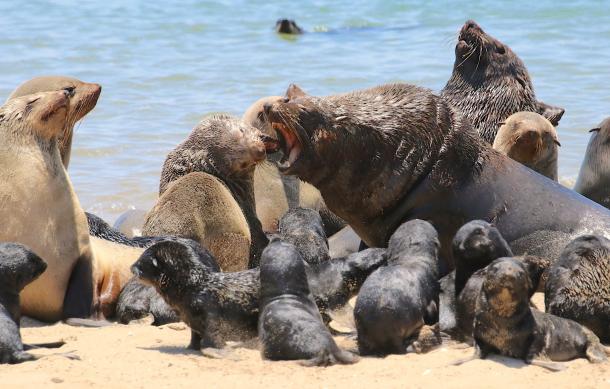
The Parliamentary Standing Committee on Natural Resources says that the devastating increase in brown fur seals currently threatens the existence of fish stocks.
The committee raised this concern during a consultative meeting with stakeholders on the motion on the devastating increase in seal population on fish stocks in Namibia held at Walvis Bay. The Cape fur seal colony on the Skeleton Coast of Namibia is the biggest on the African coast, with a population of about 1.5 million seals eating about two million metric tonnes of fish per year.
The male seals eat twice as many fish compared to those caught by fishing companies, which causes the extinction of certain species.
However, the committee says it is not the number of seals one needs to be concerned about but the amount of fish they consume.
A large seal population is contributing to fish stock depletion, but sensible management of their numbers is more difficult than many would acknowledge.
"Seals are part of the natural resources, and fish is part of the natural resources, and if one section or sector is a threat to the existence of the others, that is where our role comes in as lawmakers to make a law to manage them sustainably. This is why I am here. Nothing is confidential at the moment. Nothing is a secret at the moment. It's a known fact that the overpopulation of seals has become a threat to the very same environment," says the Parliamentary Standing Committee chairperson, Tjekero Tweya.
However, the general manager of Princess Brand Processing, Adolf Burger, says there is a need to control the overpopulation of seals.
Fisheries Biologist Lessey Kalwenya says the seals play a vital role in the marine ecosystem as they are one of the top predators.
Currently, she says, only two companies have seal harvesting quotas.
The seal processing factory in Henties Bay and the National Youth Council are harvesting seals.
The months of October, November, and December are usually the seal breeding season, where male seals reserve and defend their territories that consist of harems of between five and 25 females.
After three months of nursing, the female seals will go out to sea to feast on fish while the pups stay ashore.
This makes them vulnerable to opportunistic scavengers such as jackals and hyenas.





